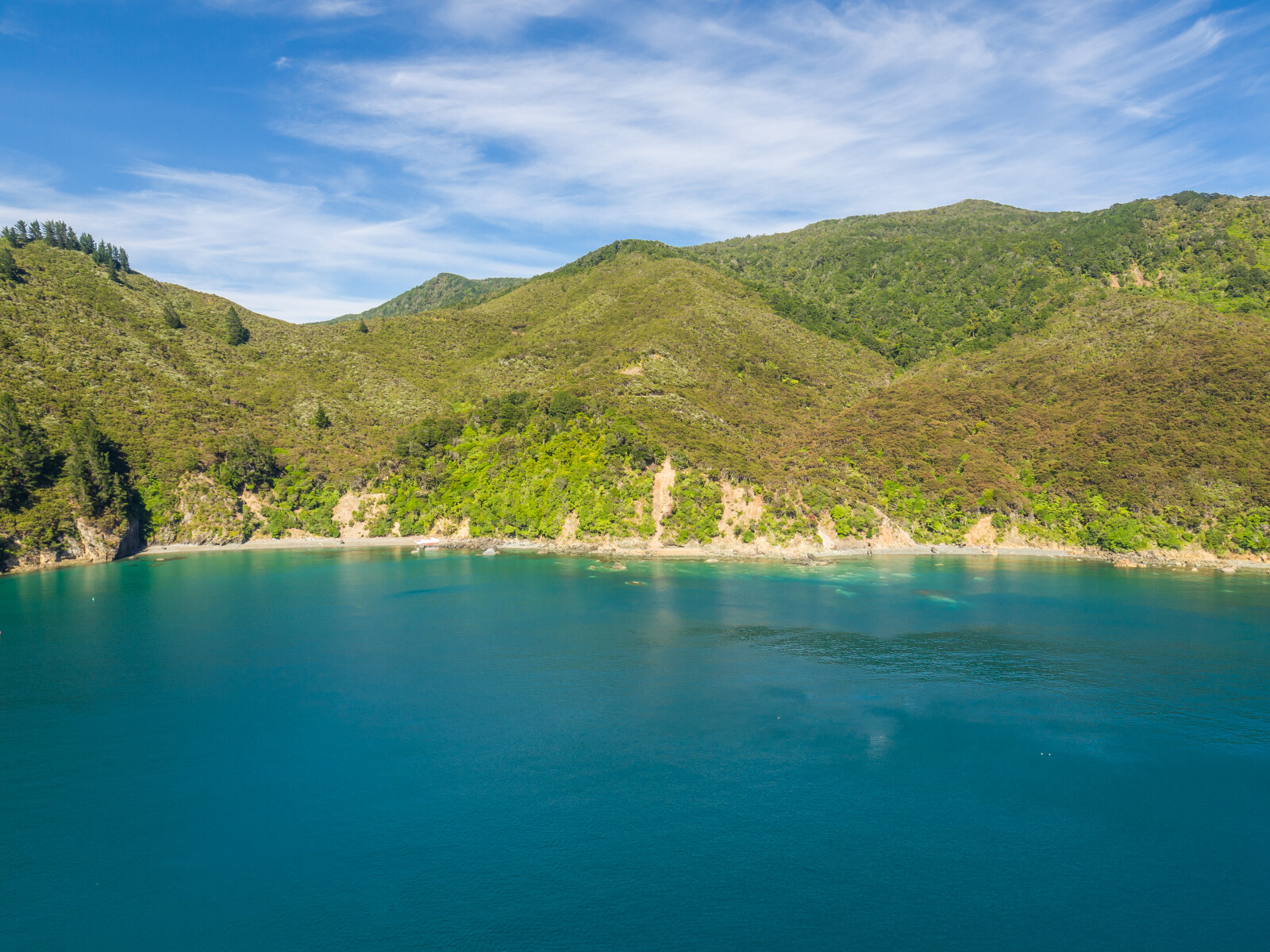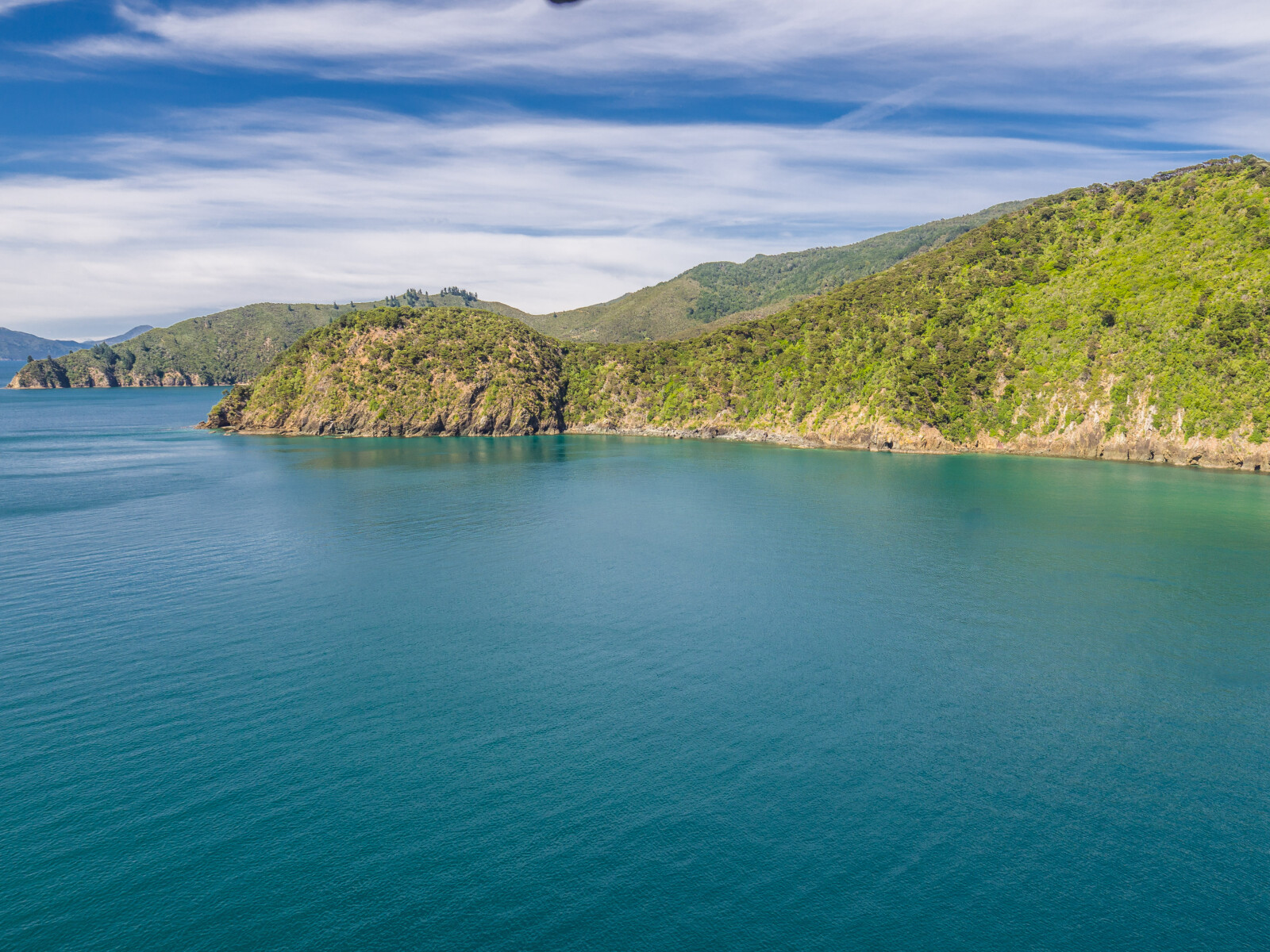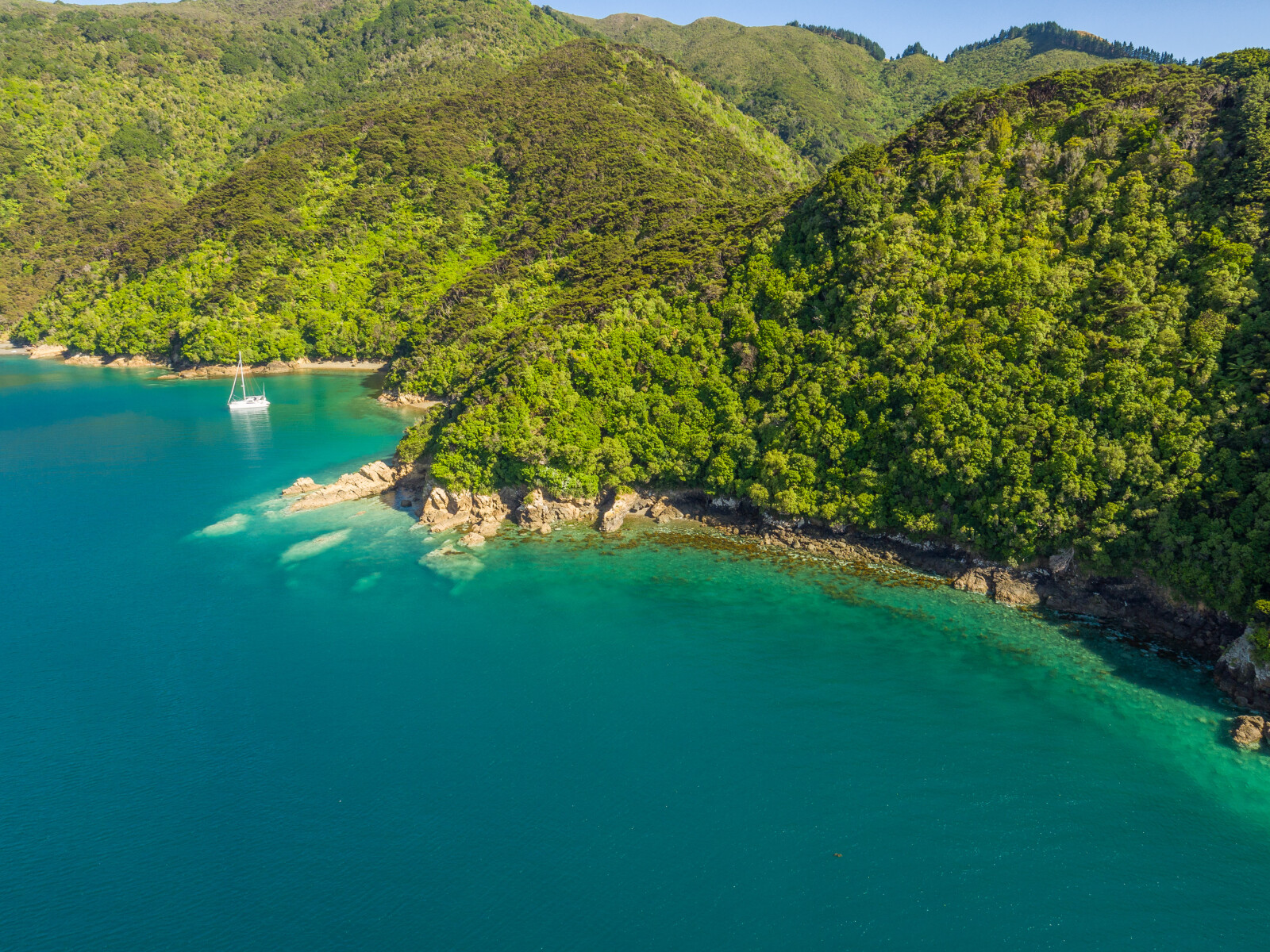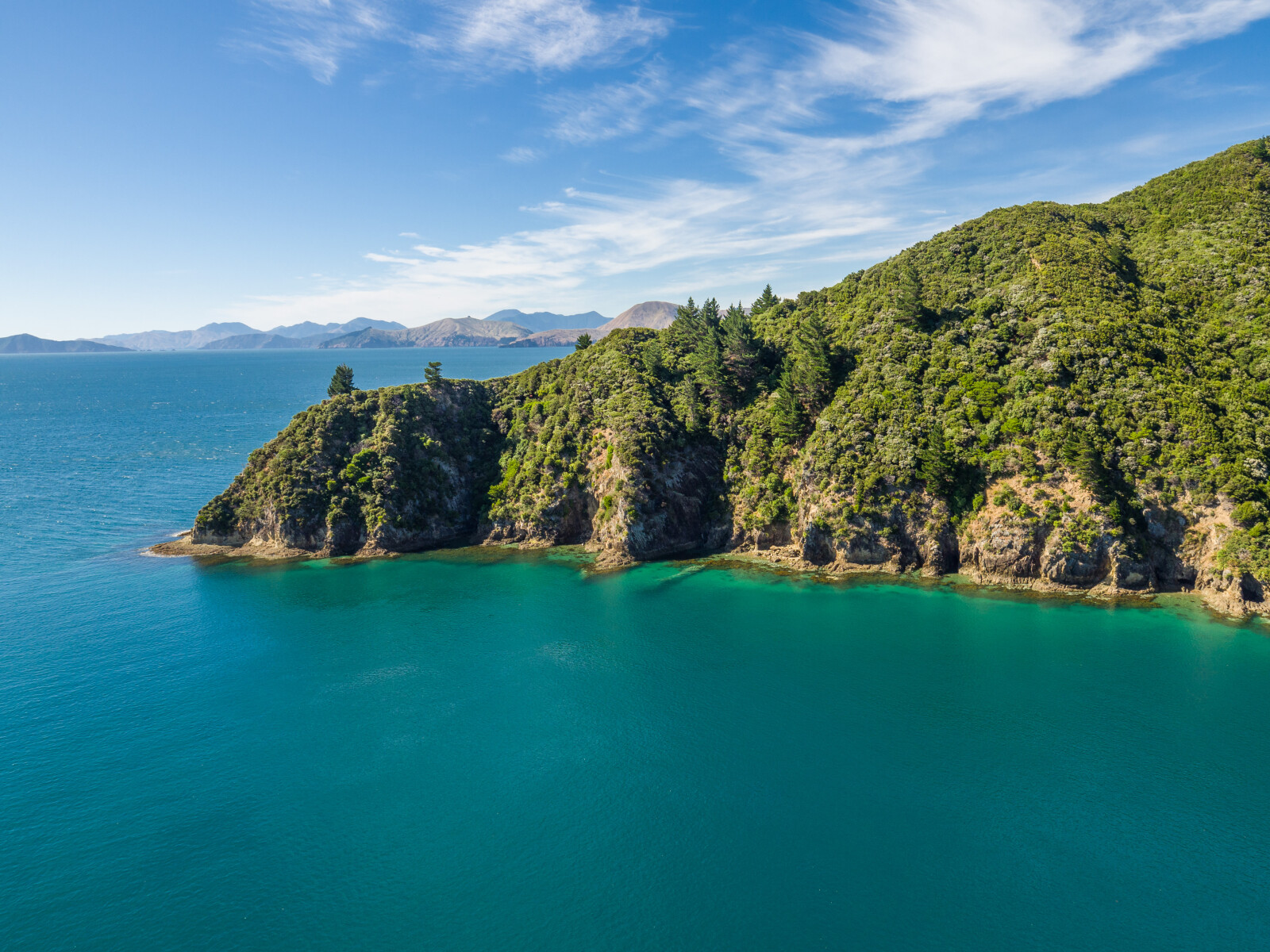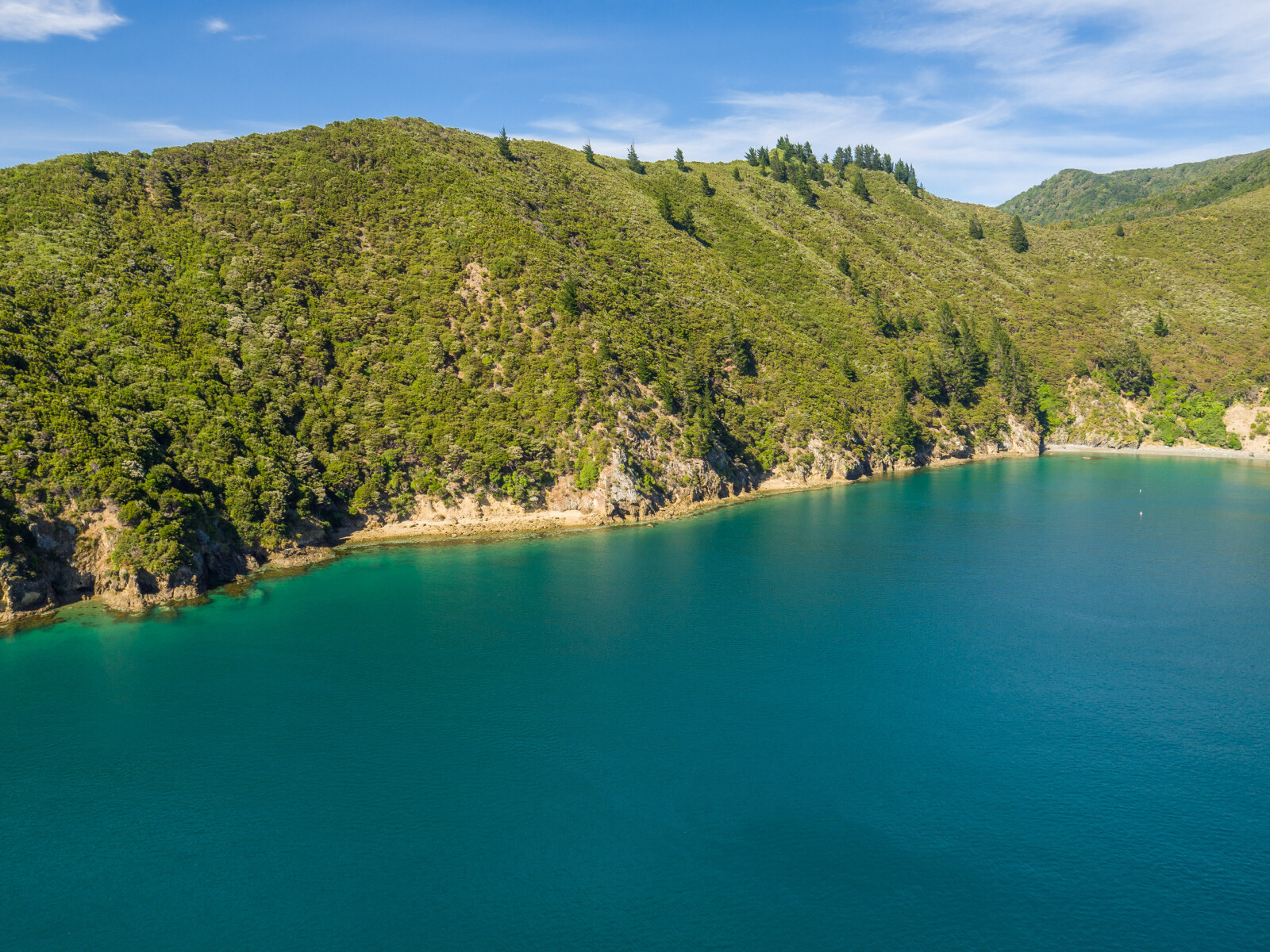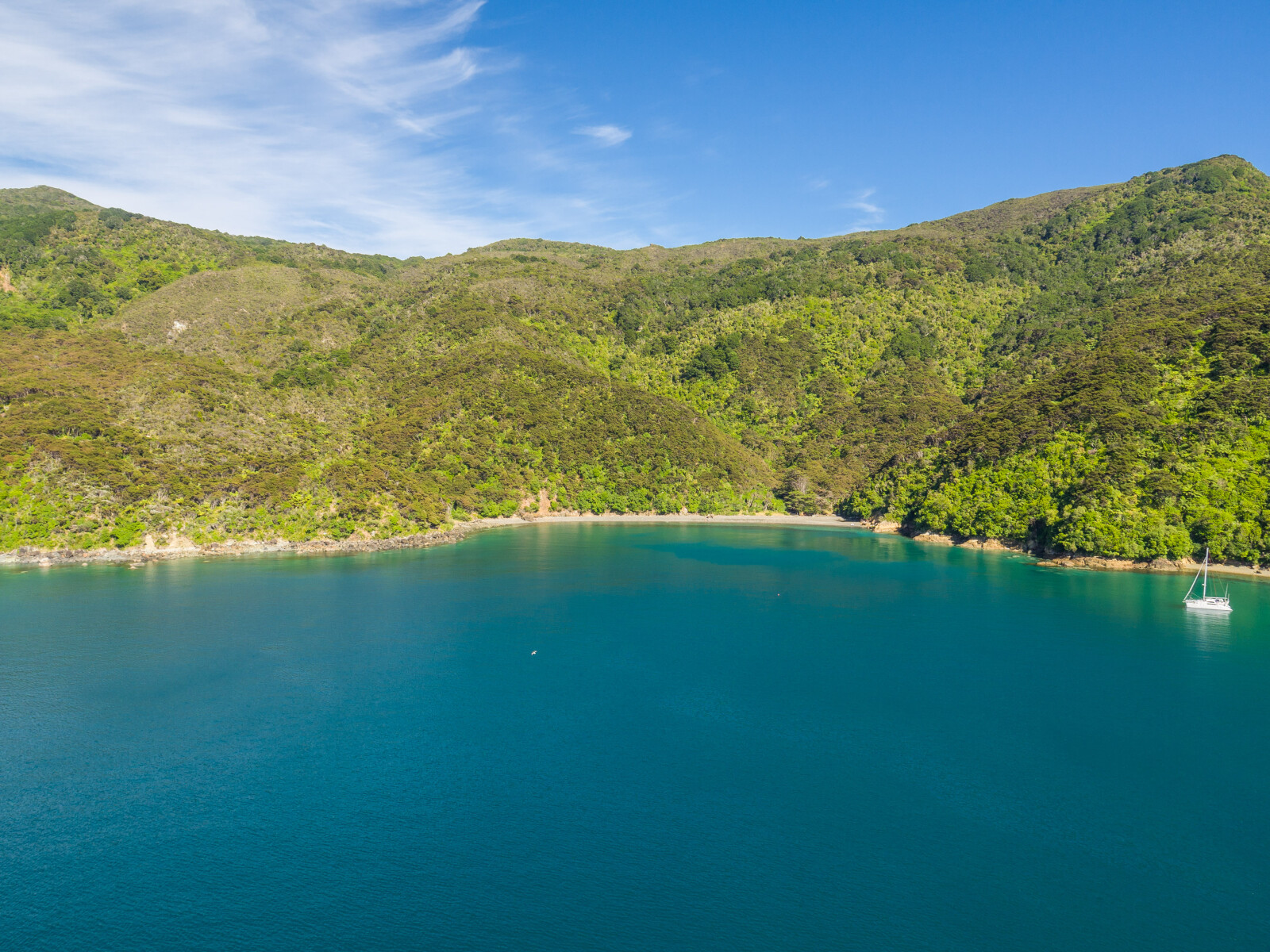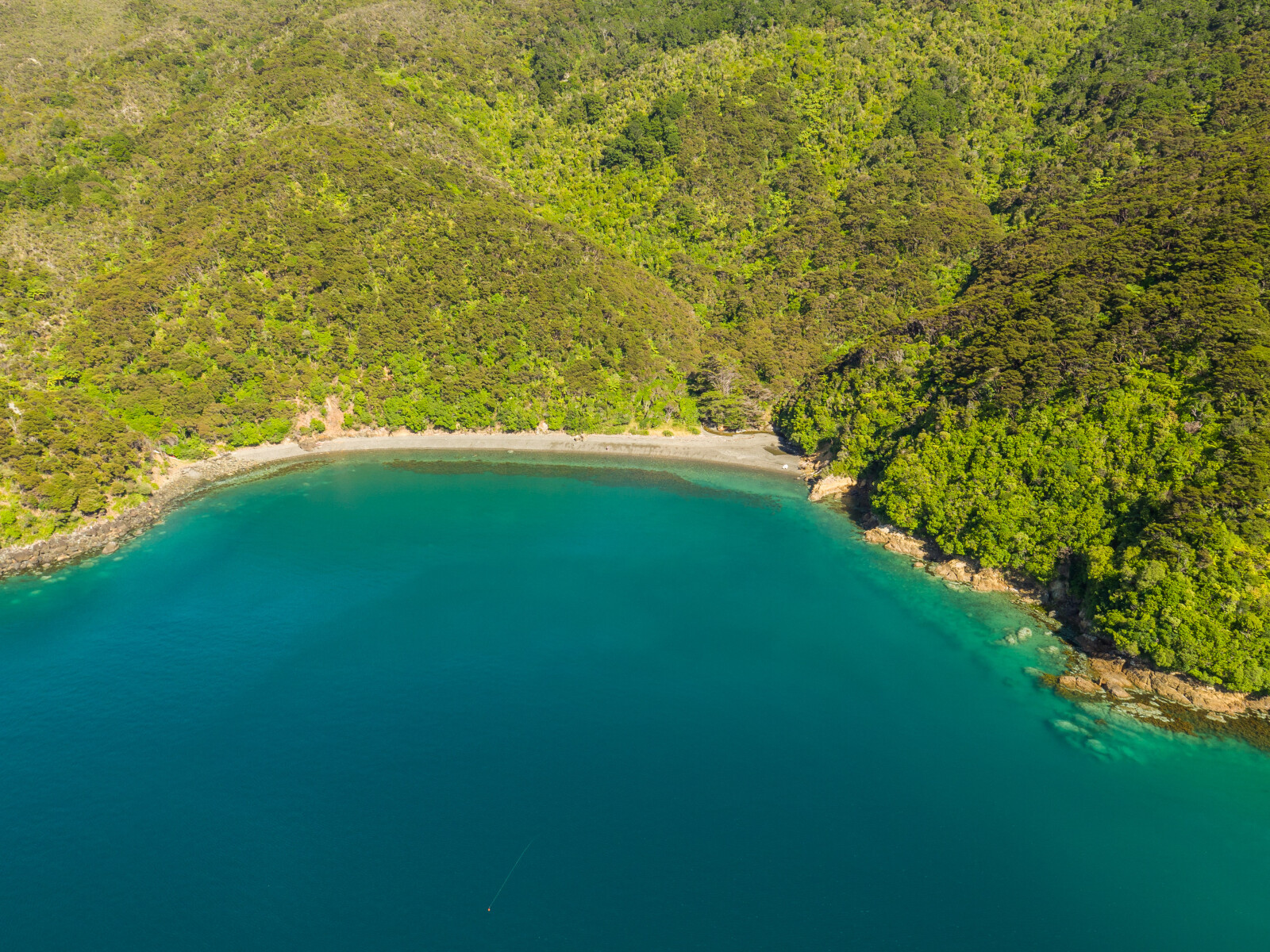The name of this bay in English translates as the house with a clear unobstructed view.
In the bay there is a rock that has worn footholds cut into it. Local folklore tells of Māori climbing the rock to gain a view of Admiralty Bay.1
It is also believed that this bay is the last anchorage site for the HMS Endeavour, when in March 1770 Captain James Cook began his homeward journey to England. Cook and his men spent several days in the bay, refitting the ship with wood from the nearby forests and taking on water from the stream in the bay.
In February 1985 the New Zealand Historic Places Trust unveiled a plaque commemorating the Endeavour’s visit to Whareātea Bay. The plaque is located on a rock at the north end of the bay, near the stream.
The plaque reads:
"James Cook sailed the Endeavour from this bay on 31 March 1770 leaving New Zealand and steering west on his long homeward voyage."2
In the early 1900s, John and Wetekia Ruruku Elkington lived at the northern end of the bay. The dilapidated remains of their small house can be seen through the trees above the creek.
Wetekia Ruruku Elkington of Ngāti Koata was a highly regarded member of the community. She bore 13 children and fostered 20 more. She became the unofficial midwife of the island and was fluent in English and Te Reo Māori. Following her death in 1957, the New Zealand Geographic Board gave the island’s highest point, Attempt Hill (729m), the alternative name of Maunga Wetekia (Mt Wetekia) in her honour.3
1. Olive Baldwin, Story of New Zealand’s French Pass and d’Urville Island (Plimmerton: Fields Publishing House, 1979) 128.
2. Stephen Bagley, “Captain James Cook’s D’Urville Island Anchorage”, Journal of the Nelson and Marlborough Historical Societies, Volume 1, Issue 5, (1985), accessed June 5, 2018, http://nzetc.victoria.ac.nz//tm/scholarly/tei-NHSJ04_05-t1-body1-d7.html .
3. Gerard Hindmarsh, “Discovering D’Urville”, Heritage New Zealand, (2006), accessed, May 8, 2018, https://web.archive.org/web/20110511071150/http://www.historic.org.nz/en/Publications/HeritageNZMagazine/HeritageNz2006/HNZ06-DiscoveringDUrville.aspx .

